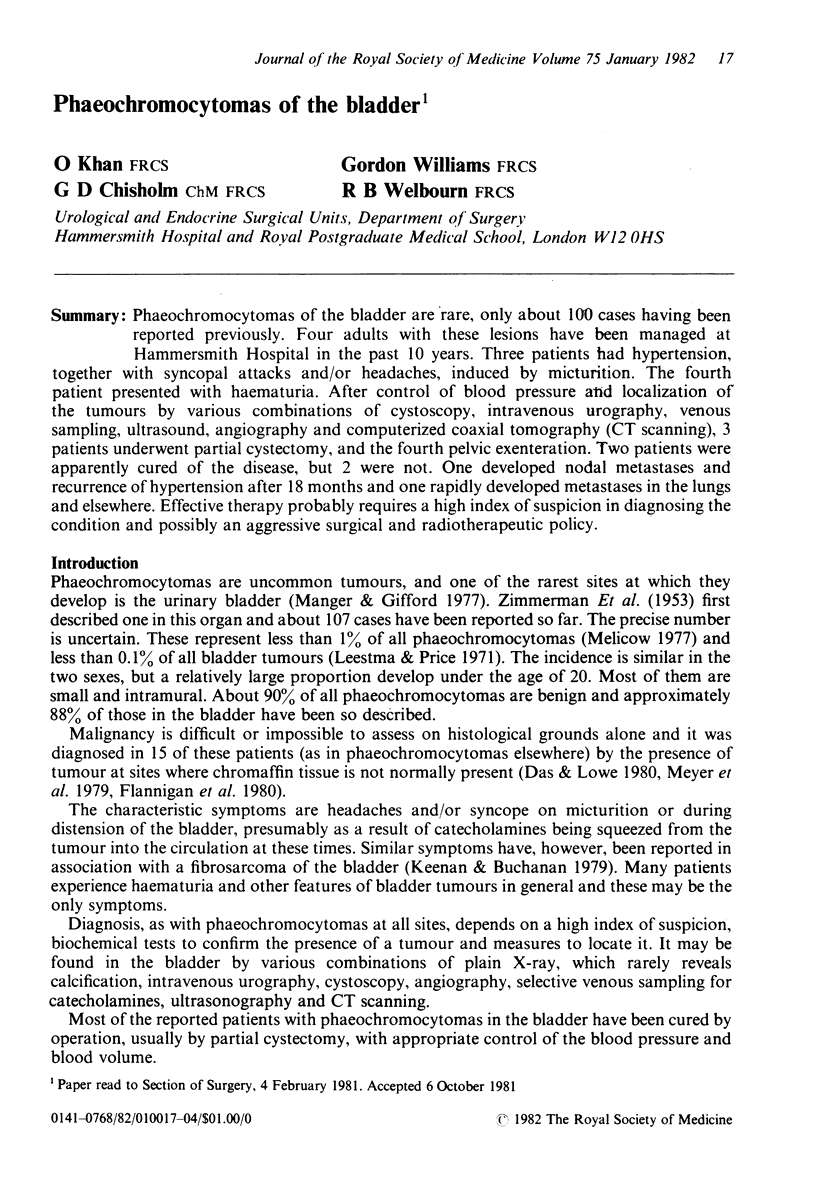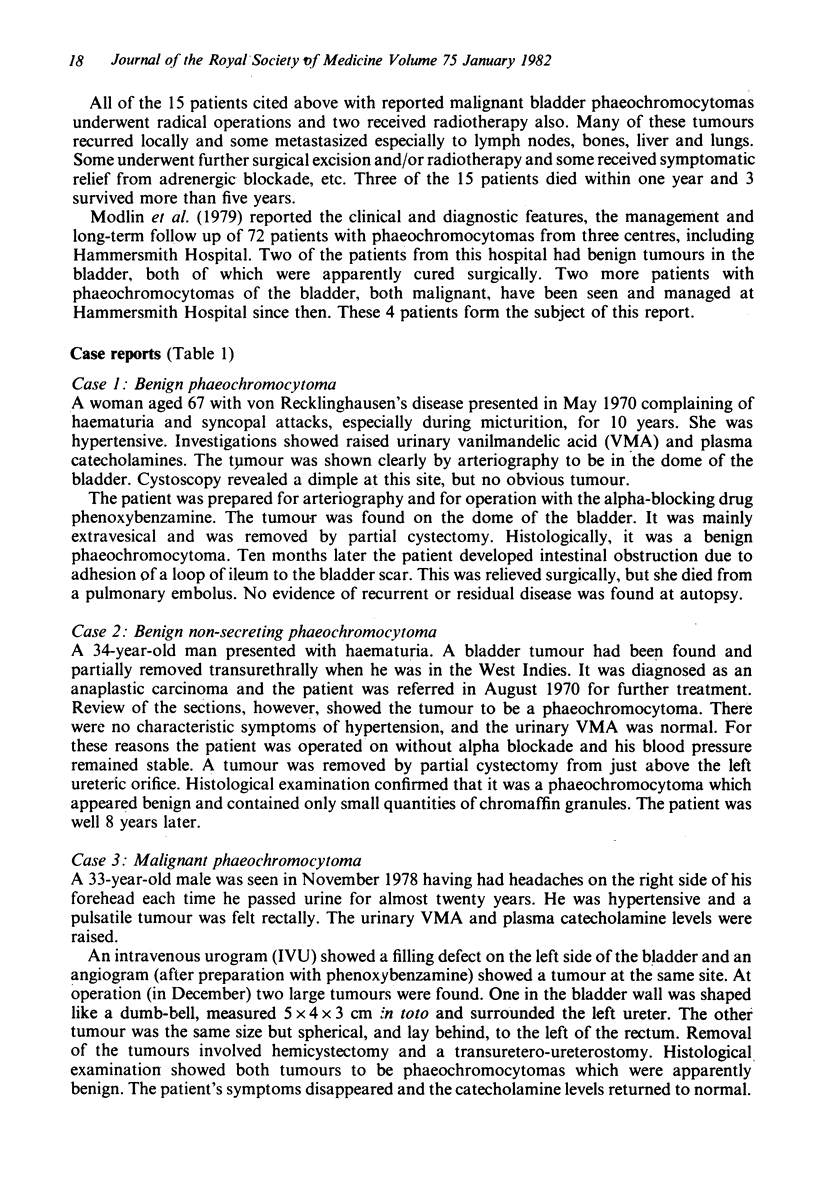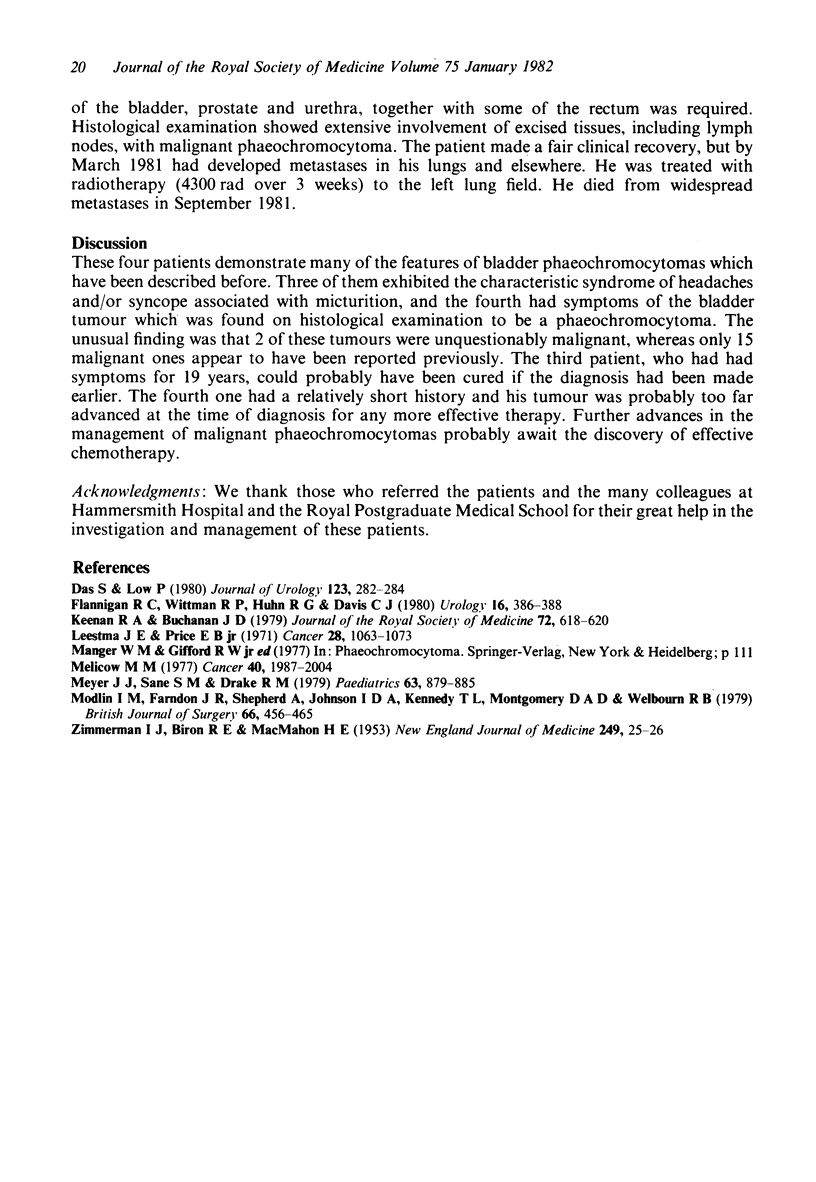Abstract
Phaeochromocytomas of the bladder are rare, only about 100 cases having been reported previously. Four adults with these lesions have been managed at Hammersmith Hospital in the past 10 years. Three patients had hypertension, together with syncopal attacks and/or headaches, induced by micturition. The fourth patient presented with haematuria. After control of blood pressure and localization of the tumours by various combinations of cystoscopy, intravenous urography, venous sampling, ultrasound, angiography and computerized coaxial tomography (CT scanning), 3 patients underwent partial cystectomy, and the fourth pelvic exenteration. Two patients were apparently cured of the disease, but 2 were not. One developed modal metastases and recurrence of hypertension after 18 months and one rapidly developed metastases in the lungs and elsewhere. Effective therapy probably requires a high index of suspicion in diagnosing the condition and possibly an aggressive surgical and radiotherapeutic policy.
Full text
PDF



Selected References
These references are in PubMed. This may not be the complete list of references from this article.
- Das S., Lowe P. Malignant pheochromocytoma of the bladder. J Urol. 1980 Feb;123(2):282–284. doi: 10.1016/s0022-5347(17)55898-x. [DOI] [PubMed] [Google Scholar]
- Flanigan R. C., Wittmann R. P., Huhn R. G., Davis C. J. Malignant pheochromocytoma of urinary bladder. Urology. 1980 Oct;16(4):386–388. doi: 10.1016/0090-4295(80)90144-2. [DOI] [PubMed] [Google Scholar]
- Keenan R. A., Buchanan J. D. Fibrosarcoma of bladder exhibiting endocrine characteristics of phaeochromocytoma. J R Soc Med. 1979 Aug;72(8):618–620. doi: 10.1177/014107687907200816. [DOI] [PMC free article] [PubMed] [Google Scholar]
- Leestma J. E., Price E. B., Jr Paraganglioma of the urinary bladder. Cancer. 1971 Oct;28(4):1063–1073. doi: 10.1002/1097-0142(1971)28:4<1063::aid-cncr2820280433>3.0.co;2-r. [DOI] [PubMed] [Google Scholar]
- Melicow M. M. One hundred cases of pheochromocytoma (107 tumors) at the Columbia-Presbyterian Medical Center, 1926-1976: a clinicopathological analysis. Cancer. 1977 Nov;40(5):1987–2004. doi: 10.1002/1097-0142(197711)40:5<1987::aid-cncr2820400502>3.0.co;2-r. [DOI] [PubMed] [Google Scholar]
- Meyer J. J., Sane S. M., Drake R. M. Malignant paraganglioma (pheochromocytoma) of the urinary bladder: report of a case and review of the literature. Pediatrics. 1979 Jun;63(6):879–885. [PubMed] [Google Scholar]
- Modlin I. M., Farndon J. R., Shepherd A., Johnston I. D., Kennedy T. L., Montgomery D. A., Welbourn R. B. Phaeochromocytomas in 72 patients: clinical and diagnostic features, treatment and long term results. Br J Surg. 1979 Jul;66(7):456–465. doi: 10.1002/bjs.1800660704. [DOI] [PubMed] [Google Scholar]
- ZIMMERMAN I. J., BIRON R. E., MACMAHON H. E. Pheochromocytoma of the urinary bladder. N Engl J Med. 1953 Jul 2;249(1):25–26. doi: 10.1056/NEJM195307022490106. [DOI] [PubMed] [Google Scholar]


